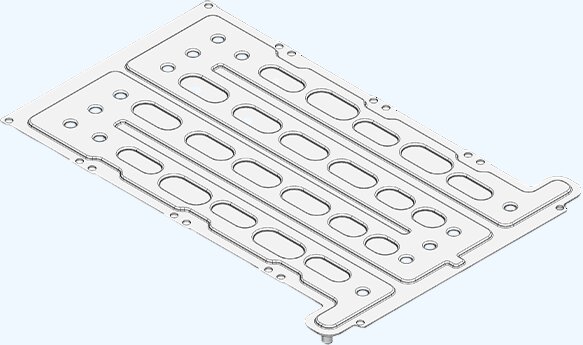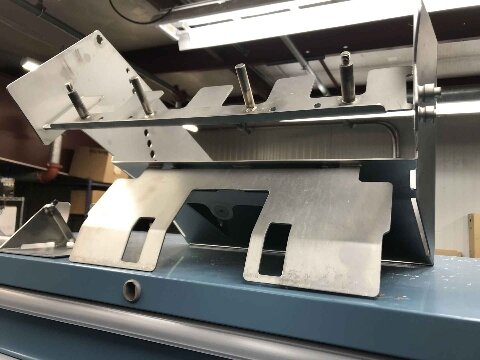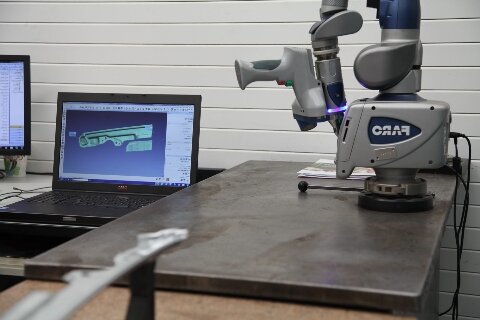Many engineers and designers today face the same challenge: making parts with complex and detailed shapes that remain accurate during production. As designs get smaller and more intricate, traditional cutting methods often fall short.
Laser cutting has revolutionized the production of these parts. It brings together precision, speed, and control to handle fine details that once seemed out of reach. In this article, we’ll examine how this technology handles complex geometries and maintains accuracy in industries where precision is crucial.
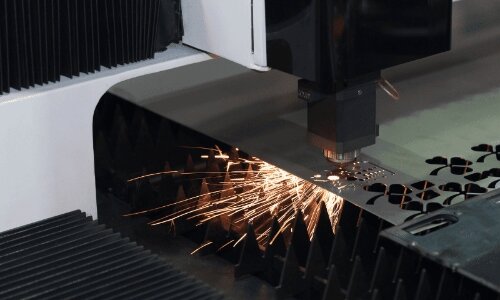
The Science Behind Laser Precision
Laser precision comes from the narrow and stable focus of its beam. The laser can concentrate light into a spot smaller than a fraction of a millimeter. The energy in that small point is strong enough to melt or vaporize metal instantly along the cutting path. Because there’s no physical contact, the nearby material doesn’t bend or distort.
This non-contact process enables excellent accuracy. The computer control system adjusts the beam’s power and position in real time, ensuring every feature matches the digital design. Tolerances within a few microns are possible, even on reflective or heat-sensitive metals.
Thermal control is another key factor. By adjusting the beam’s power and cutting speed, the heat stays focused and limited to a tiny area. This prevents cracking or warping that often happens with mechanical or plasma cutting. The final cut is smooth and clean, typically requiring little to no finishing work.
Precision Control: Power, Focus, and Speed
Cutting accuracy depends on controlling three main factors — power, focus, and speed. Operators continually adjust these settings to ensure every detail remains sharp and consistent across complex designs.
Adjusting Power for Different Materials and Thicknesses
Laser power decides how deep and fast the beam cuts. Thin metal sheets require lower power to avoid excessive melting or creating rough edges. Thicker metals require higher power to achieve full penetration.
Different metals react differently. Stainless steel needs more power because it reflects part of the laser’s energy. Aluminum cools quickly, so operators often increase power or slow the cutting speed to keep a stable melt area. Brass and copper reflect even more light, so controlled power pulses are used to prevent overheating or burnt edges.
If the power is too high, the cut widens and the surface turns rough. If it’s too low, the material may not cut through completely. The best results are achieved by finding the balance where the laser cleanly separates the metal with minimal heat around the edges.
Fine-Tuning the Focus Point for Detail Accuracy
Focus control has a significant impact on precision. The laser beam reaches its narrowest point at the focus, where the energy is most concentrated. When this point sits right on the surface or slightly below it, the cut stays sharp and consistent.
For thin sheets, a shallow focus keeps the edges smooth and prevents burn-through. For thicker materials, the focal point moves deeper to ensure complete cutting through all layers.
Auto-focus systems help maintain this balance on curved or uneven surfaces. They adjust the focal depth in real time, keeping the beam steady and preventing tapering. This fine control allows laser cutting to produce accurate curves, corners, and minimal features.
Balancing Speed with Edge Quality
Speed also plays a vital role in quality. If the machine moves too fast, the laser may not cut through completely, leaving jagged or incomplete edges. Moving too slowly can cause heat buildup, which widens the kerf and slightly warps the metal.
For complex shapes, slower speeds are more effective. They give the laser more control in tight corners and small areas where direction changes quickly. Slower speeds also help reduce rough buildup on the lower edge.
Modern laser systems automatically adjust cutting speed based on the shape and size of each feature. This intelligent control ensures efficient production while maintaining high detail quality. The result is clean, smooth edges and precise contours, even on the most delicate patterns.
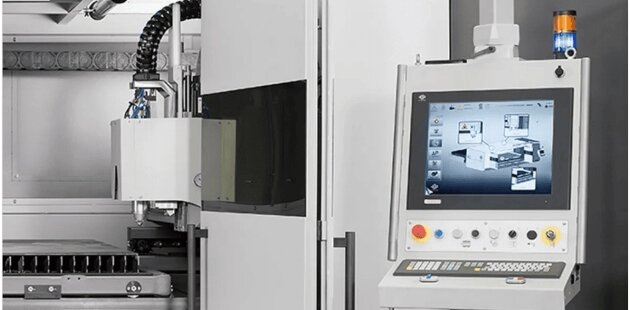
The Role of CAD Design in Complex Laser Cutting
Every precise cut starts with a well-prepared digital design. A clear CAD plan guides the laser cutter, ensuring smooth movement, accurate geometry, and consistent results.
Preparing High-Quality Vector Files
Laser cutters follow vector paths to move the beam exactly where it needs to go. File formats like DXF, DWG, and AI are best suited because they store coordinates rather than pixels. This gives the machine exact instructions for each line, curve, and turn.
Clean, complete paths are essential. Open lines or overlapping shapes can cause double cuts, gaps, or rough edges. Before exporting, designers should check that all contours are closed and simplified. Removing extra points or unnecessary curves helps the cutter move more smoothly.
It’s also essential to confirm the correct scale and units. A file that appears correct on screen can still yield incorrect dimensions if the export settings are wrong. Consistent layer naming makes it easier to mark which parts need cutting, engraving, or skipping. Keeping the file organized and simple helps the laser perform more efficiently and accurately.
Optimization Techniques for Complex Shapes
After design, optimization turns the file into an efficient cutting plan. One key method is nesting — arranging multiple parts tightly on a sheet to use as much material as possible. Good nesting reduces waste and shortens production time.
Contour compensation fine-tunes the cutting path to account for the kerf — the thin line of material removed by the laser. This ensures that parts fit together precisely, neither too tight nor too loose.
Lead-in and lead-out adjustments help control where and how the beam starts and finishes each cut. Beginning slightly outside the part prevents burn marks and keeps corners sharp. For detailed or dense patterns, short angled lead-ins allow smoother transitions between cuts.
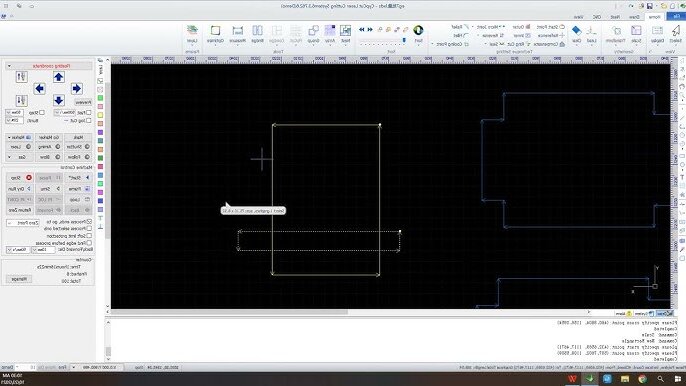
Advanced Motion Systems and Beam Stabilization
Modern motion systems keep laser cutters moving smoothly and precisely. They ensure that every contour, curve, and corner is traced with perfect alignment, consistent speed, and steady power.
High-Resolution Servo Motors for Smooth Path Control
Servo motors play a significant role in maintaining cutting accuracy. They guide the laser head along the X and Y axes using real-time feedback. High-resolution encoders continuously measure position and speed, allowing the system to correct any deviation instantly.
This constant feedback creates clean corners and smooth transitions without hesitation or vibration. When cutting complex shapes, servo control minimizes overshoot and maintains tight tolerances throughout every curve. The result is a consistent edge finish with no step marks between paths.
In micro-cutting work — such as electronics or precision mechanical parts — servo accuracy ensures that every small hole and slot lines up perfectly. These motors make continuous, microscopic adjustments that keep motion fluid and predictable, achieving detail levels that stepper motors can’t match.
Real-Time Beam Monitoring and Auto-Compensation
Beam stabilization keeps laser power and focus steady during operation. Sensors monitor energy output, beam shape, and alignment while cutting. If the system detects even minor changes — such as vibration, heat, or material reflection — it automatically adjusts the optics or beam strength to maintain balance.
This live feedback helps maintain consistent cutting depth, even on reflective or uneven materials. For example, when working with stainless steel or aluminum, reflections can disrupt stability. Beam sensors instantly fine-tune the output to prevent rough edges or incomplete cuts.
Some advanced systems integrate beam monitoring and motion control into a single, synchronized loop. As the head slows down in corners or speeds up on straight lines, the laser power adjusts accordingly. This coordination ensures a uniform kerf width, smooth edges, and accurate shapes.
Materials That Support Intricate Laser Cutting
Stainless steel is one of the best materials for laser cutting. Its balanced density and moderate reflectivity allow smooth melting with a tiny burr. The result is a clean, consistent edge. That’s why stainless steel is widely used in electronics, medical devices, and aerospace parts where precision and edge quality are crucial.
Aluminum is lightweight and highly conductive, which makes heat control more challenging. It cools quickly and can draw heat away from the cutting area. To keep cuts stable, operators often increase power or slow down the speed. With the right balance, aluminum produces fine details and smooth edges, making it perfect for enclosures, brackets, and prototype parts.
Brass reflects more laser energy than steel, so it needs tighter control over power settings. When properly tuned, the laser creates bright, polished edges with minimal oxidation. This makes brass an excellent choice for decorative pieces, nameplates, and precision fittings.
Titanium is strong, durable, and heat-resistant, which makes cutting it more demanding. Fortunately, it absorbs laser energy very efficiently. With the correct setup, the laser delivers sharp, clean cuts without distortion. Titanium’s corrosion resistance and biocompatibility make it ideal for medical instruments and aerospace components that require both high performance and a flawless surface.
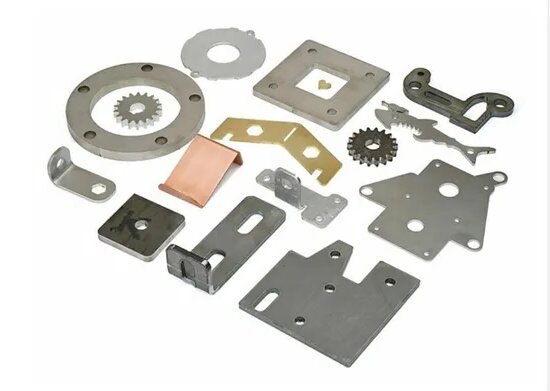
How Shengen Engineers Handle Complex Designs?
Turning complex ideas into perfect parts takes expertise and structure. Our engineers follow a careful process to ensure precision and efficiency at every stage.
CAD intake and DFM check
We begin by reviewing your DXF, DWG, or AI files. Our engineers confirm the correct units, scale, and layers, then verify that all paths are closed and features meet minimum size requirements. If potential issues are identified, we point them out promptly and suggest quick, practical solutions.
Material and thickness review
Next, we match the material grade and thickness to your specified tolerances and surface finish requirements. We also consider sheet flatness, grain direction, and any subsequent steps, such as bending or welding, to ensure everything fits together correctly.
Machine and assist gas selection
We choose the laser machine that best fits your part’s size and geometry. Nitrogen is used when clean, oxide-free edges are needed, while oxygen provides faster cutting for thicker steel. Our goal is always to strike a balance between speed and surface quality.
Path strategy and nesting
We nest parts efficiently to save material and plan cutting orders carefully. Heat-sensitive features are cut first, and we add lead-ins, micro-tabs, or common-line cuts to reduce waste and improve edge finish.
Parameter optimization
We fine-tune power, speed, pulse frequency, focus offset, and gas pressure for each material and thickness. Once we find the ideal settings, we record them to ensure stable, repeatable production.
Test coupons and the first article
Before mass production, we cut small test coupons to check kerf width, taper, burr, and heat-affected zones. We continually adjust until every dimension and surface detail aligns precisely with your drawing.
Ready to bring your intricate designs to life? Please send us your CAD files or drawings. Our engineers will review them for free, suggest design optimizations, and provide a quick, accurate quote to get your project started.
Hey, I'm Kevin Lee

For the past 10 years, I’ve been immersed in various forms of sheet metal fabrication, sharing cool insights here from my experiences across diverse workshops.
Get in touch

Kevin Lee
I have over ten years of professional experience in sheet metal fabrication, specializing in laser cutting, bending, welding, and surface treatment techniques. As the Technical Director at Shengen, I am committed to solving complex manufacturing challenges and driving innovation and quality in each project.

